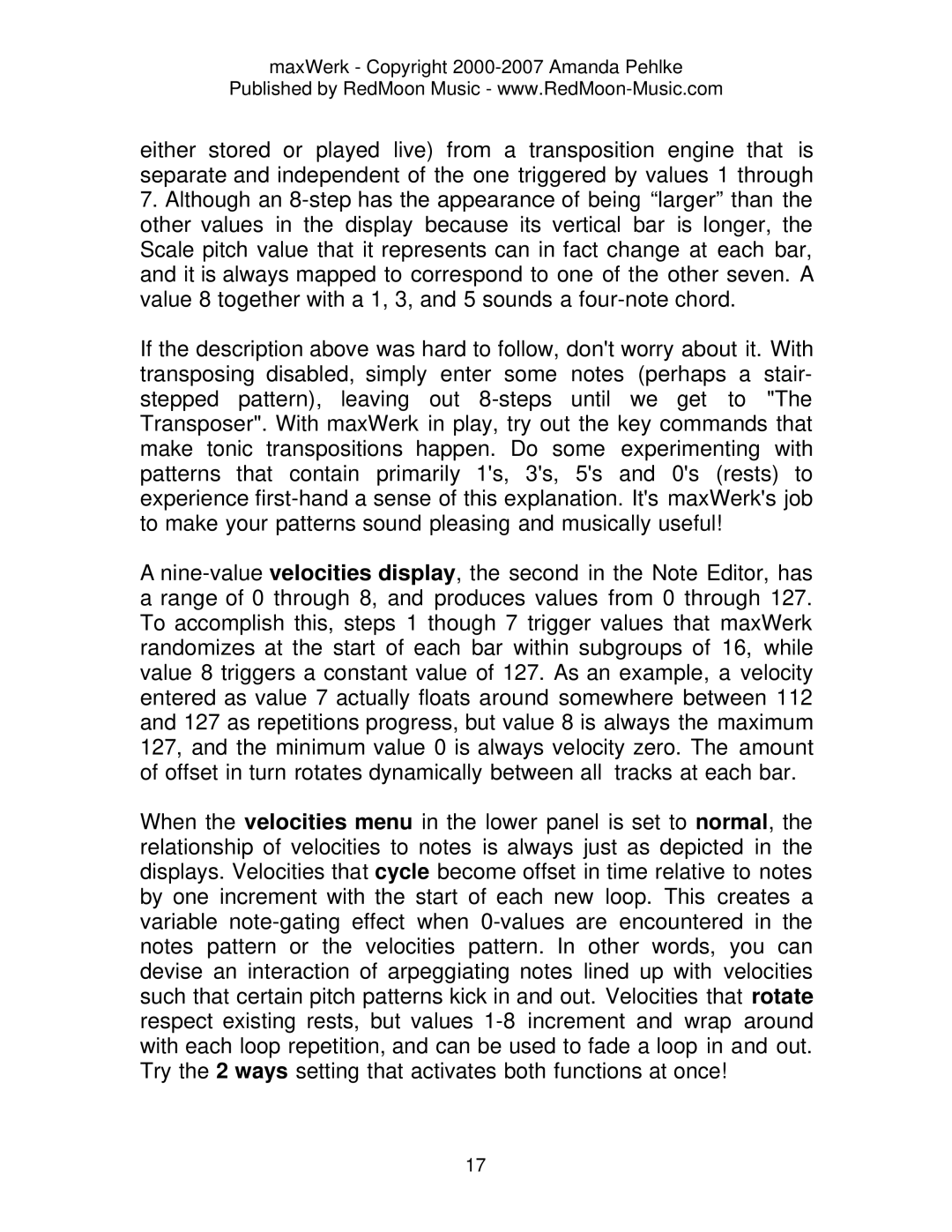maxWerk - Copyright 2000-2007 Amanda Pehlke
Published by RedMoon Music - www.RedMoon-Music.com
either stored or played live) from a transposition engine that is separate and independent of the one triggered by values 1 through
7.Although an 8-step has the appearance of being “larger” than the other values in the display because its vertical bar is longer, the Scale pitch value that it represents can in fact change at each bar, and it is always mapped to correspond to one of the other seven. A value 8 together with a 1, 3, and 5 sounds a four-note chord.
If the description above was hard to follow, don't worry about it. With transposing disabled, simply enter some notes (perhaps a stair- stepped pattern), leaving out 8-steps until we get to "The Transposer". With maxWerk in play, try out the key commands that make tonic transpositions happen. Do some experimenting with patterns that contain primarily 1's, 3's, 5's and 0's (rests) to experience first-hand a sense of this explanation. It's maxWerk's job to make your patterns sound pleasing and musically useful!
A nine-value velocities display, the second in the Note Editor, has a range of 0 through 8, and produces values from 0 through 127. To accomplish this, steps 1 though 7 trigger values that maxWerk randomizes at the start of each bar within subgroups of 16, while value 8 triggers a constant value of 127. As an example, a velocity entered as value 7 actually floats around somewhere between 112 and 127 as repetitions progress, but value 8 is always the maximum 127, and the minimum value 0 is always velocity zero. The amount of offset in turn rotates dynamically between all tracks at each bar.
When the velocities menu in the lower panel is set to normal, the relationship of velocities to notes is always just as depicted in the displays. Velocities that cycle become offset in time relative to notes by one increment with the start of each new loop. This creates a variable note-gating effect when 0-values are encountered in the notes pattern or the velocities pattern. In other words, you can devise an interaction of arpeggiating notes lined up with velocities such that certain pitch patterns kick in and out. Velocities that rotate respect existing rests, but values 1-8 increment and wrap around with each loop repetition, and can be used to fade a loop in and out. Try the 2 ways setting that activates both functions at once!
